Scaling Innovation – The What, Why, and How
Given that innovation is responsible for roughly 85% of economic growth, it’s without a doubt a pretty big deal for the success of both individual organizations, as well as for the society at large.
However, to achieve the level of impact that many are looking for from innovation, you can’t simply “create something new”, and then just hope the results will come. You will need to commit to systematically pursuing those results by scaling viable ideas into products or businesses that create value – at scale.
That is of course easier said than done. If you think it’s hard to come up with innovations, just try scaling one up. In this article, we’ll explore the topic in more detail and provide you with actionable tips on how to actually scale an innovation.

Table of contents
What does it mean to scale an innovation?
To explain what it means to scale an innovation, let’s first take a step back and look at the lifecycle of an innovation.
To begin, every innovation starts from a rough idea or concept. Often you may have a specific goal in mind, or a problem to be solved, but sometimes it can just be a cool idea that you think could really make an impact. From there, you first need to validate that the idea makes sense, and then build a product or a service that meets a real need in the market.
With these steps taken care of, the next part is to scale the innovation. At this point, we have all the pieces in place to create value, but we haven’t yet unlocked that value for the vast majority of the available market.
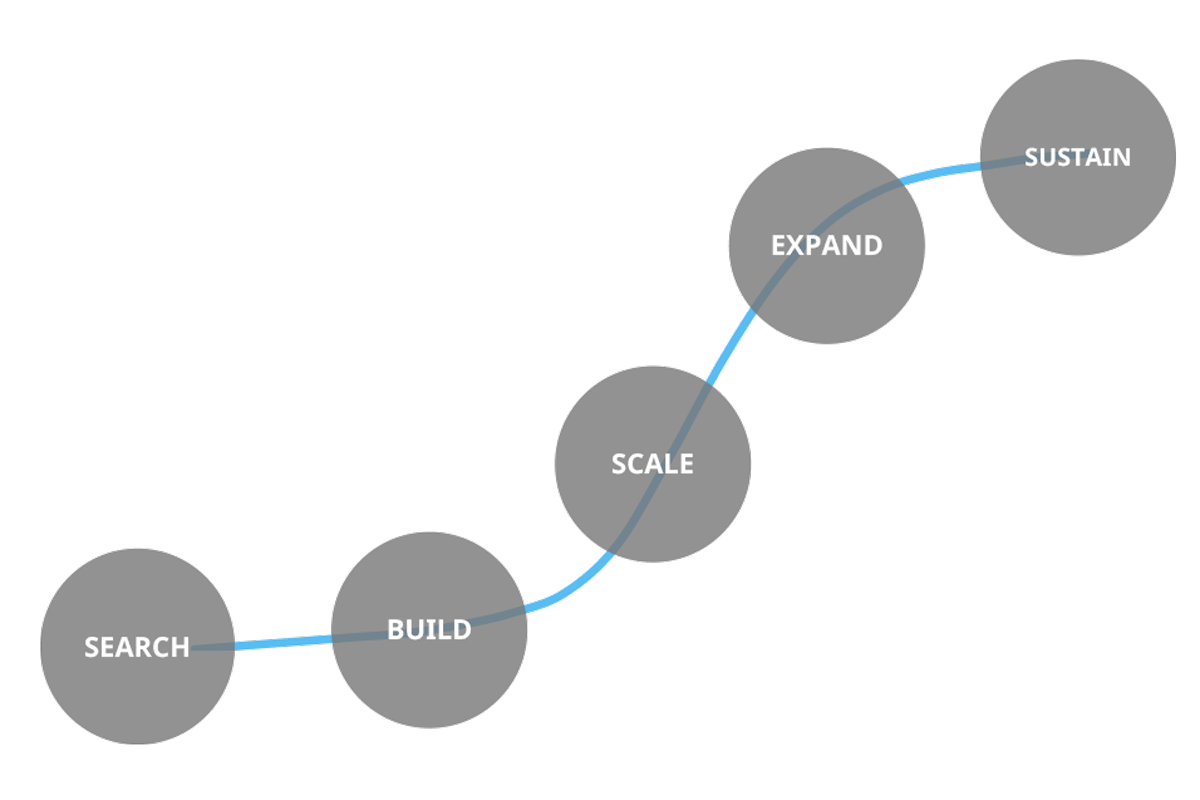 So, as you may see from the chart above, scaling is the part where most of the value creation and impact comes from. With that said, we can define scaling an innovation as the process of expanding the presence and the use of the innovation to be as widespread as possible to maximize that impact.
So, as you may see from the chart above, scaling is the part where most of the value creation and impact comes from. With that said, we can define scaling an innovation as the process of expanding the presence and the use of the innovation to be as widespread as possible to maximize that impact.
Scaling innovation is the process of expanding the presence and the use of the innovation to be as widespread as possible to maximize the impact the innovation can have.
While on paper that sounds straightforward enough, it’s extremely important to first clarify the vision of what successful scaling looks like for your innovation, and what metrics you will use to measure your success here. For some, it might just be revenue or profit, for others it could be the number of customers or users, the impact you’ve delivered, and so on.
Most of these metrics are of course related, but when you start with the end in mind and gradually work backwards from there, you are much more likely to succeed because everyone in the organization will know what it actually is that you’re aiming for.
With that goal in mind, you can start narrowing in on the methods required to get there, which is what we’ll be focusing on next.
Dimensions of scaling an innovation
Traditionally, scaling innovation is seen as a matter of advancing the adoption, or the diffusion, of innovation. This is best visualized with a chart depicting the adoption curve, which you’ll find below.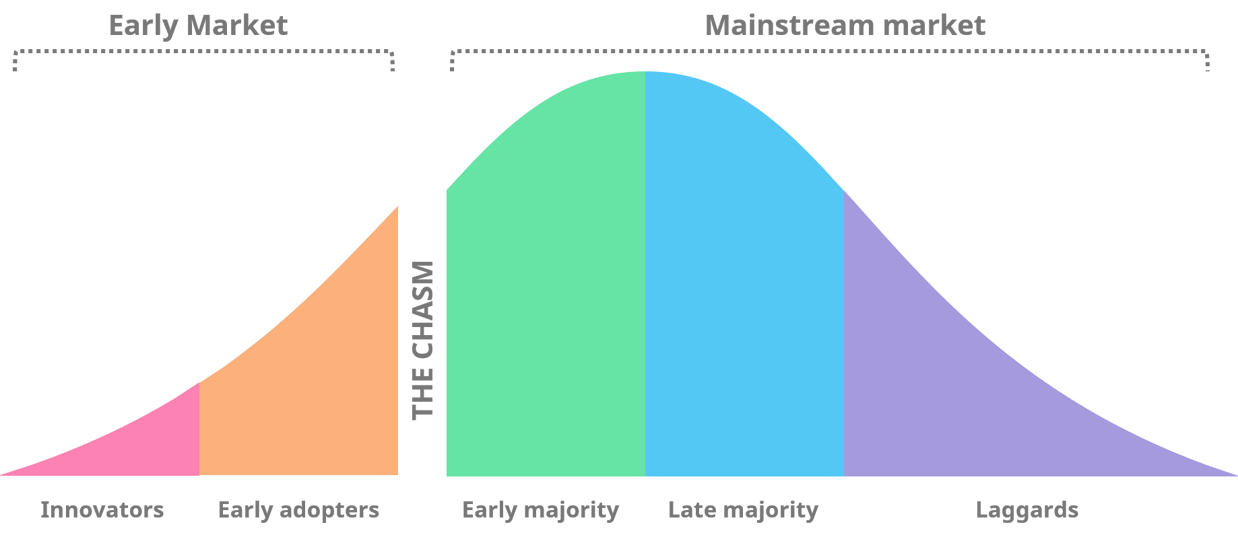 The idea is that to scale an innovation, as Geoffrey Moore well put it, you need to cross that chasm and go from a few early adopters to the mainstream market where the volumes are significantly higher.
The idea is that to scale an innovation, as Geoffrey Moore well put it, you need to cross that chasm and go from a few early adopters to the mainstream market where the volumes are significantly higher.
While that is certainly true, we can dig a bit deeper to understand scaling in a more nuanced, and more practical, way.
In reality, there are three dimensions to scaling an innovation.
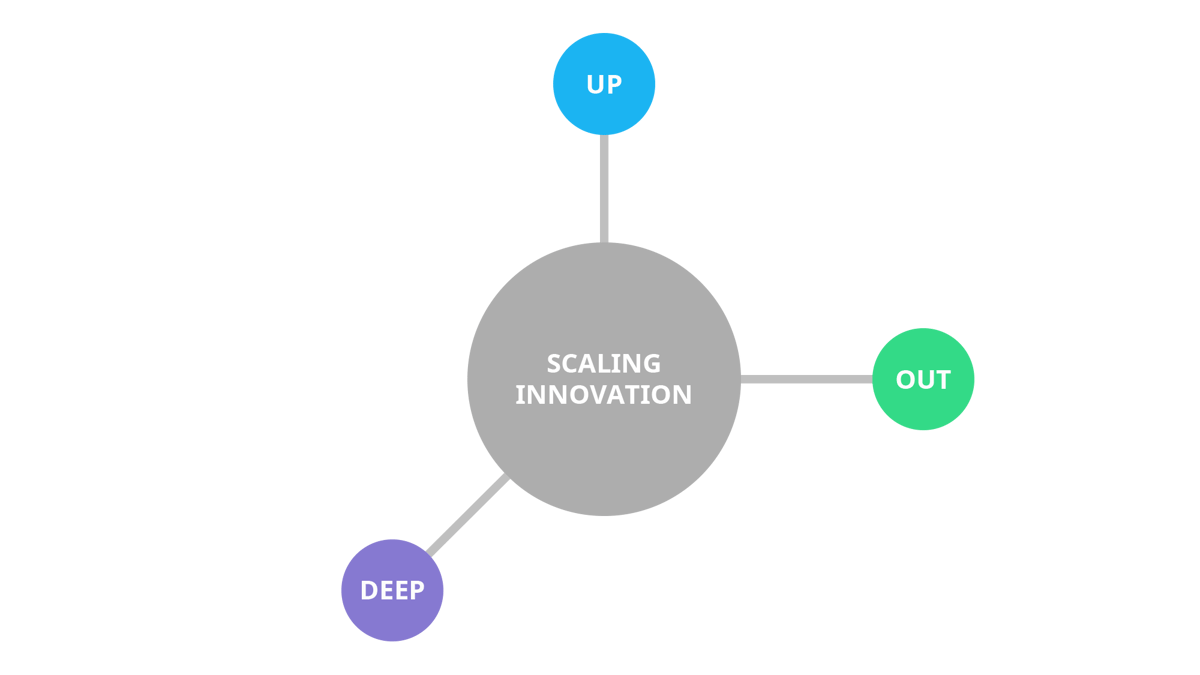
Let’s look at each of them a little closer.
Scaling Up
First, scaling up is about creating the preconditions for scaling effectively.
Before we start talking about scaling up, we’ll assume that the basic prerequisites for scaling are in place, namely that there’s a clear vision and a product-market fit for your innovation, and that the market potential is large enough for there to be something to scale to, even if the market isn’t there today.
Assuming those prerequisites are there, you need to ensure that:
- you can produce enough of the innovation to scale
- you can do that efficiently enough to be financially and operationally viable
For some products, such as software and other immaterial goods, that first part is pretty straightforward. For others, such as most complex manufactured goods, even the first one will be a real challenge.
Having said that, the second part of being efficient enough will prove to be a challenge for virtually every innovation. Even for a software product, acquiring, serving, and retaining customers profitably at scale is often more difficult than people realize. For other, fundamentally less scalable goods and services, this is often excruciating.
In addition to these two more practical aspects, there’s a third and more ambiguous component to scaling up, and that is the social and institutional adoption of the innovation
How well you scale up affects how large of a scale you can ultimately reach.
For example, with an innovation as mundane as the modern umbrella, men who used it were initially ridiculed. So, before the umbrella could really take off as an innovation, societal norms needed to change. In other cases, there may be regulatory hurdles or other institutional considerations that might need to be addressed before an innovation can ultimately scale.
Regardless of the specifics, scaling up is necessary for every innovation that wants to reach significant scale.
However, what many people don’t pay enough attention to is that how well you scale up affects how large of a scale you can ultimately reach. If you can’t produce the goods at volume, and at low enough of a price while still being profitable at a unit economics level, there’s an obvious limit to your potential to scale.
Scaling Out
Scaling out is what most people think of when it comes to scaling an innovation. It’s the geographical or demographical expansion of the innovation to a larger audience.
In its simplest form, scaling out simply means getting a wider market share and audience for the innovation within an existing market. As we covered earlier, this typically means moving from those early adopter market segments towards the mainstream
Scaling out is what most people think of when it comes to scaling innovation as it’s where you expand the innovation to a larger audience.
However, it doesn’t have to be limited to just that. Sometimes the same products or services can be sold and used in other geographical areas, or even in other industries or entirely different use cases, both of which unlock new markets and additional demand, and thus lead to a larger impact for the innovation. A well-known example of this is Tesla using their experience and innovations in electric car batteries to expand to stationary energy storage.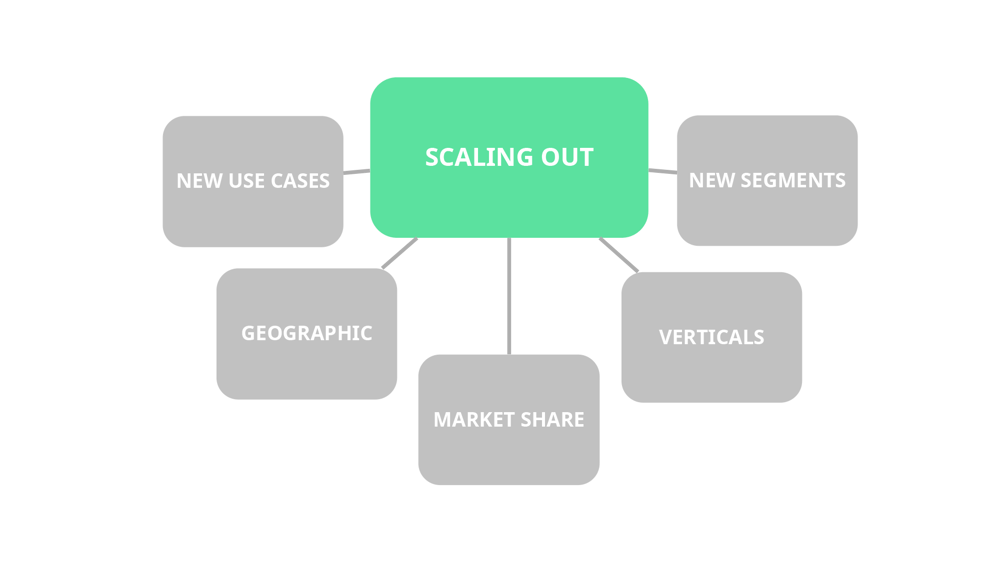 Regardless of which path you choose, often these efforts to scale out to new segments or industries do require additional work to adapt the innovation or its positioning to the differing characteristics of these new segments, markets, and audiences.
Regardless of which path you choose, often these efforts to scale out to new segments or industries do require additional work to adapt the innovation or its positioning to the differing characteristics of these new segments, markets, and audiences.
Scaling out to new market segments can increase complexity a lot, so be mindful of the operational implications of your strategic decisions here.
This naturally adds complexity, which makes the scaling up part we covered earlier more challenging. So, be mindful of how you scale out and what the operational implications of your strategic decisions here will be.
Scaling Deep
The third, and the least well-known method for scaling innovation is scaling deep. This essentially means that you unlock more impact for your innovation by expanding and maximizing the use of it, typically for the people who already have access to it.
This usually requires you to either change people’s behavior to increase usage, or alternatively come up with innovative means for improving the utilization rate by enabling more people to make use of the same assets. Scaling deep is partly a matter of culture and mindset, and partly a more practical matter of having the right components in place for enabling and encouraging active use of the innovation. A classic, albeit somewhat controversial example of the first type would be social media algorithms. They are designed to provide users with engaging content to keep them entertained and thus stay in the service for longer, which leads to more revenue from the same number of users.
A classic, albeit somewhat controversial example of the first type would be social media algorithms. They are designed to provide users with engaging content to keep them entertained and thus stay in the service for longer, which leads to more revenue from the same number of users.
An example of the second type would be cloud computing. By adding network, virtualization, and software layers on top of the computing hardware, cloud providers can get more use out of the same hardware, which unlocks value for both the service provider and the customers.
This is how Amazon not just significantly reduced costs in one of their major cost centers, IT infrastructure, but actually turned that into Amazon Web Services (AWS), an additional growth business that now accounts for the majority of the profits for the entire organization
Scaling deep is about unlocking more impact for your innovation by expanding and maximizing the use of it. This can help reduce the need to scale up or out, or alternatively maximize the impact from doing so.
Scaling Deep can reduce the need to scale up or out, or alternatively, maximize the impact from doing so. As such, it's an excellent compliment for most innovations. However, it's just that: a compliment. Your primary method of scaling should always be either to Scale Up or Scale Out depending on whether your bottleneck is more on the supply or demand side.
Even in the case of AWS, which has created entirely new vectors for scaling out and has dramatically subsidized their costs for scaling up, it obviously wouldn't have been possible without Amazon already being at significant scale.
What’s the takeaway? These dimensions are distinct but very much intertwined.
If you can scale on all three of these dimensions in a coordinated way, you will not only be much more likely to achieve significant scale with your innovation in the first place, but also maximize the potential for scale and impact from those efforts. If you build momentum on one of the dimensions, some of that momentum will carry over to the other dimensions, which again helps you accelerate change going forward.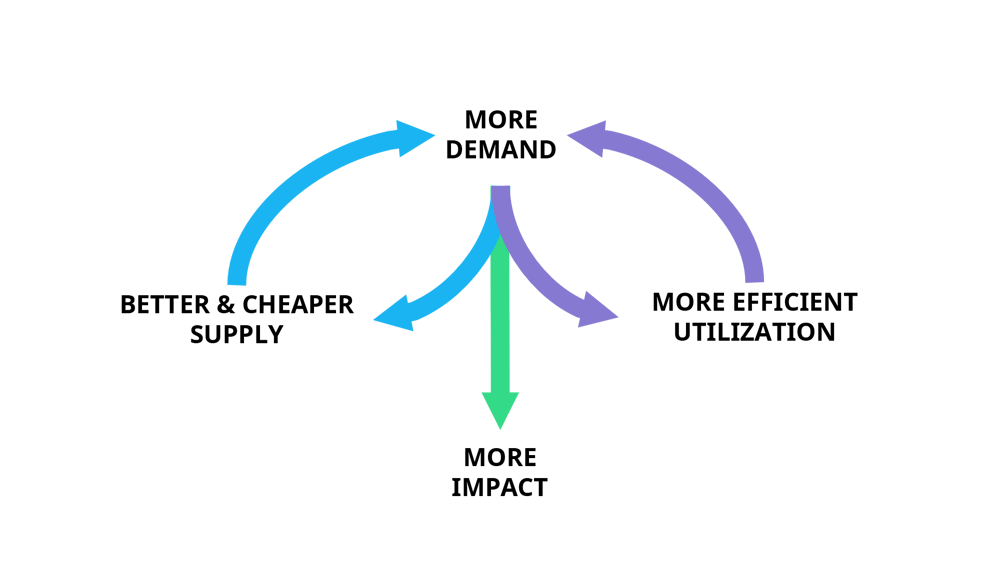 As such, pay attention to each of these dimensions and try to consider all of them in your plans to scale innovation. That doesn’t mean you should focus on all three from the get-go, on the contrary, but planning with the big picture in mind can allow you to make much more educated decisions.
As such, pay attention to each of these dimensions and try to consider all of them in your plans to scale innovation. That doesn’t mean you should focus on all three from the get-go, on the contrary, but planning with the big picture in mind can allow you to make much more educated decisions.
Scaling innovation in practice
As we’ve established above, there unfortunately isn’t a one-size fits all solution to scaling innovation.
Achieving breakthrough success with an innovation, which is the goal of scaling innovation, always requires many related and adjacent (usually more incremental) innovations.
This is an extremely common pattern that you will see happening over and over again if you just start paying attention to it. Square co-founder Jim McKelvey has done a great job in describing that in more detail in his recent book called the Innovation Stack.
A well-known example is the lightbulb. Edison patented his famous design back in 1879, but most households didn’t yet have access to electricity, so it wasn’t something they could benefit from. It took countless other innovations and another 45 years before even half of US homes had one, even though the benefits were obvious.
In practice, scaling an innovation is simply an iterative and exploratory process where you focus on eliminating whatever bottleneck is preventing you from scaling, one by one. And, as we saw in the example of the lightbulb, sometimes these can be much bigger and more fundamental than you may think at first.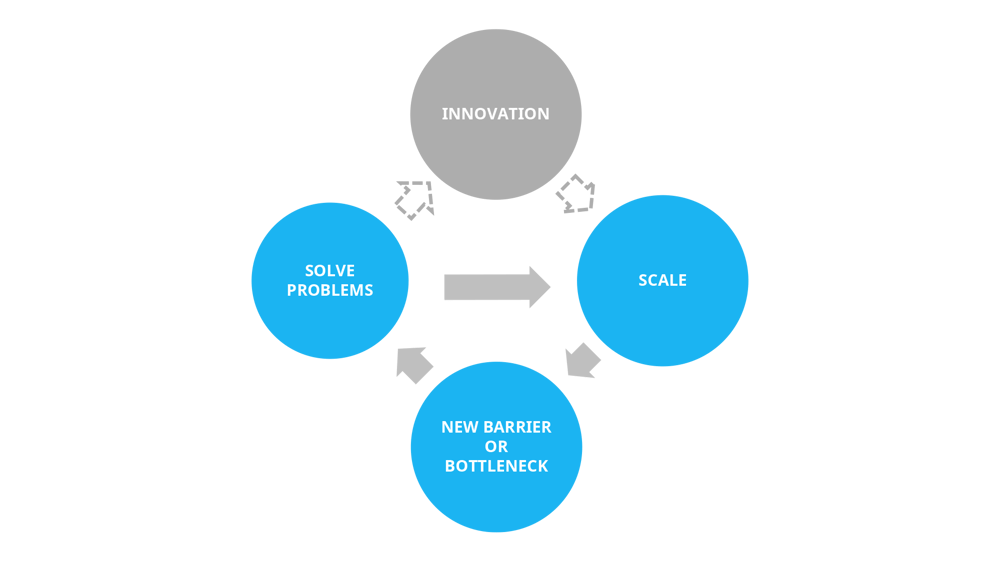 Often you can just copy solutions other people have already used for the same or a similar problem (which you should always go for if you can), but many times you will also need to innovate something completely new and occasionally even go beyond your core product.
Often you can just copy solutions other people have already used for the same or a similar problem (which you should always go for if you can), but many times you will also need to innovate something completely new and occasionally even go beyond your core product.
With that said, there are some common patterns that can be helpful for structuring your thinking when faced with some of these bottlenecks. However, as each innovation is ultimately new, and thus unique, these won’t necessarily fit every case.
Having said that, we’ll share one framework for each dimension of scaling below. We’ve also created a toolkit that includes the frameworks as editable templates, along with some examples and other supporting material, which you can download here.
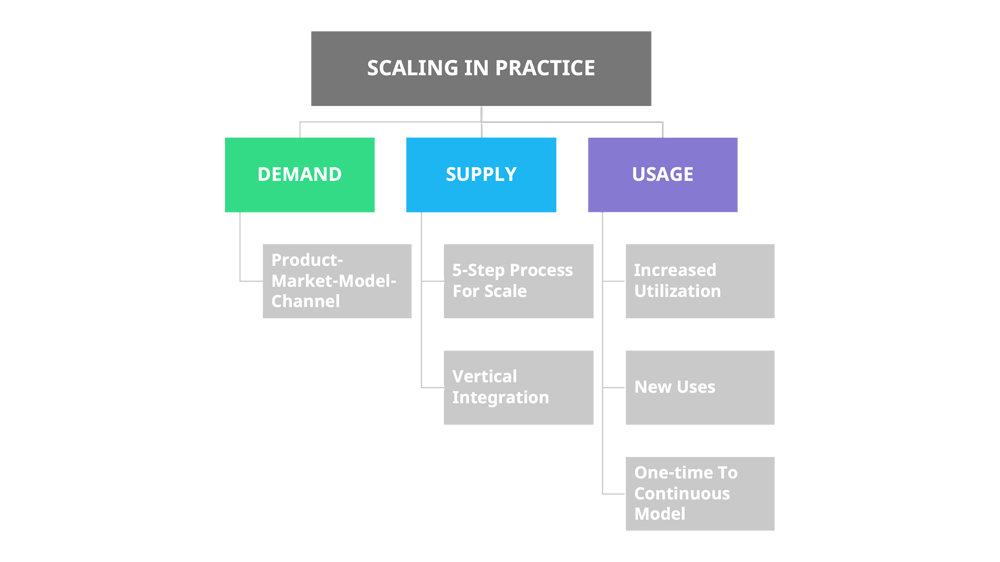
Demand side
For most organizations and innovations, the demand side is likely the source of most bottlenecks.
The way we see it, this is not just about drumming up interest and demand for your product, but also about making sure that it fits the needs and budgets of the buyers in your market. And of course, you need to make sure you’re in a market, or at least one that has the potential to become, large enough to accommodate your scaling efforts.
Unlike what people often think, product-market fit isn’t enough for a business to be scalable. You also need to have the right business and operating models, as well as use the right channels.
In other words, scaling out isn’t just about product-market fit, as people often mistakenly think. You also need to have the right business and operating models and use the right channels. Brian Balfour has written an excellent five-part series about this, which I highly recommend you read.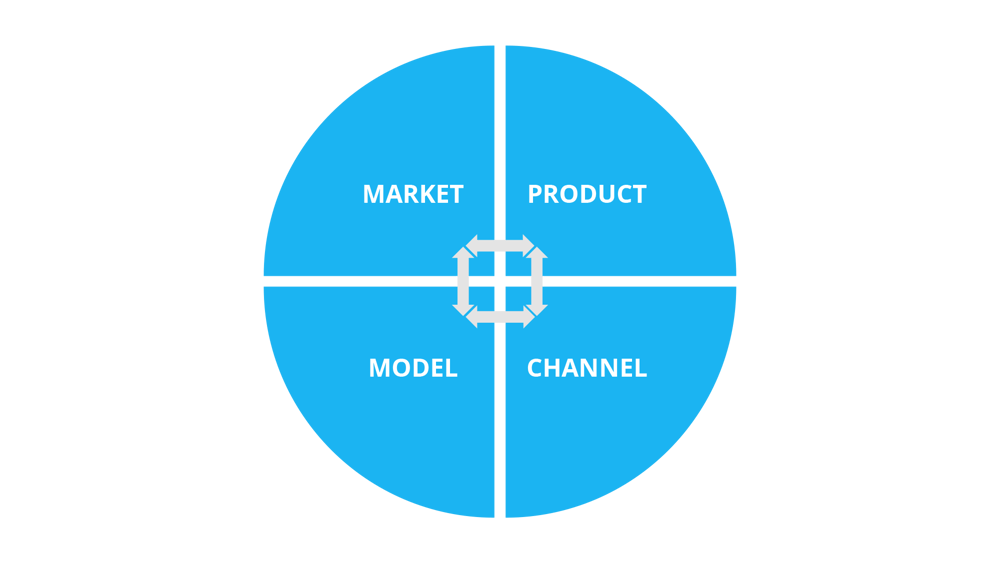 The basic idea is pretty simple: your business needs to align all of these aspects in a cohesive manner to be able to scale. If even one of them is wrong, growth will feel like, as Balfour puts it, “pushing a boulder uphill”. It will take way too much capital, effort, and time. However, get the four elements right together, and the growth will come naturally.
The basic idea is pretty simple: your business needs to align all of these aspects in a cohesive manner to be able to scale. If even one of them is wrong, growth will feel like, as Balfour puts it, “pushing a boulder uphill”. It will take way too much capital, effort, and time. However, get the four elements right together, and the growth will come naturally.
What’s important to understand here is that the model isn’t a static picture you just do once. If the market changes, or you run into challenges that force you to change one of these elements, you’ll need to review each element and make sure the big picture still works.
Supply side
For some products and businesses, especially those with physical products, the supply side often becomes a key consideration.
Here, the bottlenecks can be extremely varied, and dependences on external suppliers can lead to challenges that are hard to overcome.
In general, what top innovators do differently from the rest of the companies is that they almost always vertically integrate their value chain as they are working towards scaling up.
There are many benefits to this approach, such as reduced overhead, but the key differences are in increased quality, and most importantly, the company’s ability to control their own destiny and innovate more freely because they’re not being constrained by their supply chain
Top innovators vertically integrate their value chain to address bottlenecks and turn cost centers into additional sources of growth and profit.
The classic example is Apple, and the way that they control both the hardware and software of their products. In recent years, they’ve been increasing that integration in both directions. They’re moving upstream to offer more services on top of their operating systems, as well as downstream by designing their own processors, which has provided them with a big performance advantage. However, there are many others. Amazon, Microsoft, Tesla, Google, Netflix, Nvidia, and pretty much every innovative company is trying to do the same in the scope of their own business.
However, there are many others. Amazon, Microsoft, Tesla, Google, Netflix, Nvidia, and pretty much every innovative company is trying to do the same in the scope of their own business.
The basic idea is again simple: if a part of your supply chain becomes a major bottleneck, or is a major cost center, you should try to take control of those parts to address the bottlenecks and turn cost centers into additional sources of growth and profit, just like Amazon has done with AWS, but also warehousing and shipping.
That isn’t to say that vertical integration wouldn’t be challenging or have downsides. It certainly is and does. Because of these limitations, it’s generally advisable to only vertically integrate to the parts of your supply chain that either are a clear bottleneck or could become a key competitive advantage for you. However, top innovators often have little choice but to take these steps if they want to move fast enough and have enough control to be able to scale their innovation to its full potential.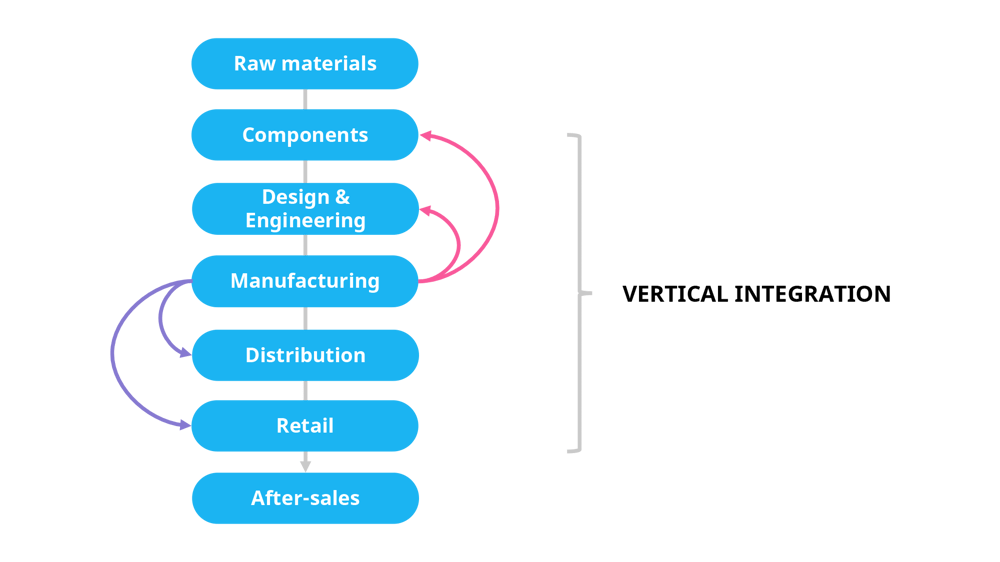 Another key consideration on the supply side is simply the architecture of your products and services, and the process you have for delivering them. It’s obviously much easier to have a scalable architecture and automated processes for purely software or content focused businesses, but how you craft these does play a huge role for complex physical products too.
Another key consideration on the supply side is simply the architecture of your products and services, and the process you have for delivering them. It’s obviously much easier to have a scalable architecture and automated processes for purely software or content focused businesses, but how you craft these does play a huge role for complex physical products too.
This is again a very extensive topic on its own, but the goal should be to try to make the manufacturing, delivery, and service of your products as seamless and scalable as possible. As with everything else we’ve discussed so far, this too is an iterative process.
However, to provide you with a slightly more practical framework to get started, here’s Elon Musk explaining how he’s learned to approach this topic after his early struggles of trying to do that with the extremely complex products at SpaceX and Tesla.
While Musk specifically talks about the process in the scope of engineering for scale, these same principles also apply to your organization and internal processes too.
And, as Musk explained in the video, it’s easy to get tempted by the promises of optimizing for efficiency and automation, but if you haven’t addressed the big picture first, these will often end up just being a big waste of time and money.
So, make sure to start by first eliminating those unnecessary requirements and parts or tasks, and try to simplify the design before you focus too much on optimizing for efficiency and automating.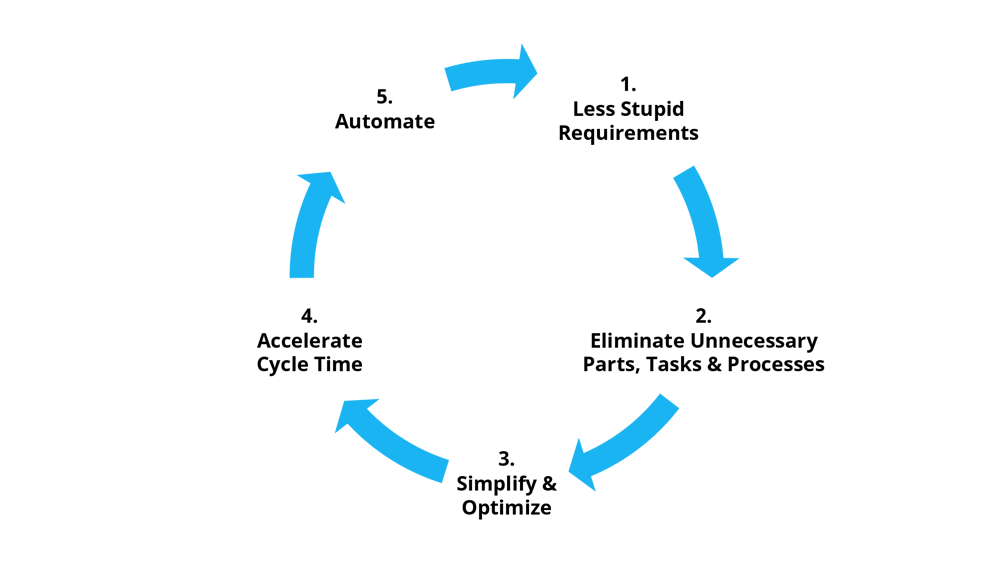
Utilization
In addition to supply and demand, we still have the third dimension of utilization to cover. The idea with this “scaling deep” part is to find creative ways to make the most out of existing supply to either unlock new demand, maximize the utilization of those assets, or simply to increase your customer retention by finding ways to get more value for them from your products.
As you may have guessed by now, the specifics vary quite a lot on a case-by-case basis, but the flowchart below can hopefully serve as a starting point for your efforts in this area.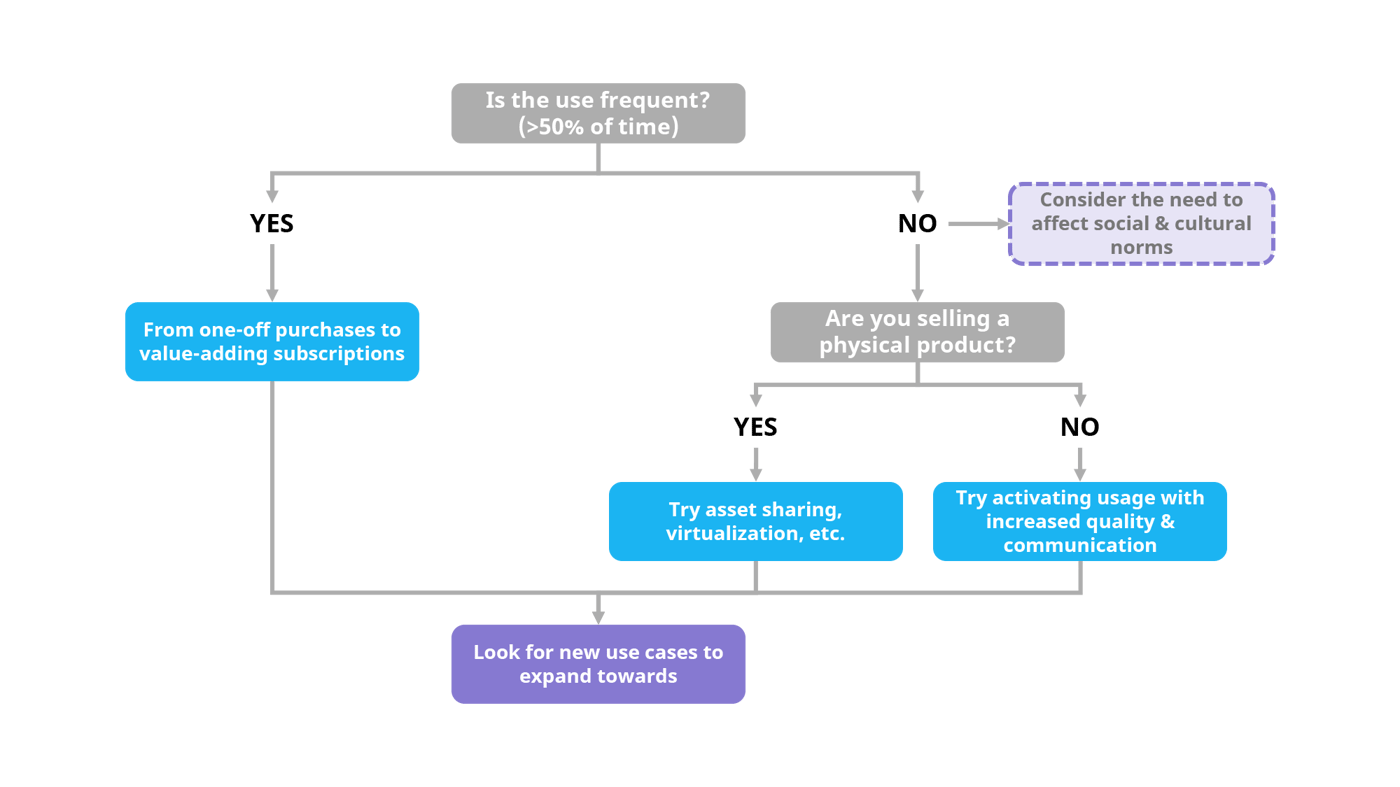 To summarize, there are three common paths you may take here.
To summarize, there are three common paths you may take here.
The first is to find ways to increase the usage of assets that are only being used a fraction of the time through practices such as asset sharing and virtualization.
The second is to move from one-off purchases to a subscription to eliminate friction and increase the usage of the services.
The third is to find additional ways to expand the use of the product. This is usually done either by finding new value-adding uses for the same product, or simply by activating usage through means such as improved quality, usability, better communication etc.
However, sometimes it might even be necessary to work around tougher and more pervasive issues, such as regulatory considerations or even the changing of societal norms.
While increased utilization isn’t often that glamorous or exciting, it can really make a difference in making your business and operating models efficient enough to allow you to scale volume faster and more sustainably.
Conclusion
Scaling an innovation won’t be easy. It will always take years, and an endless amount of hard work with an extreme focus on solving each and every bottleneck standing in your way.
Hopefully you’ll find some of the frameworks and playbooks we’ve introduced in this article useful for shaping your thinking, and for building your organization and processes, but you’ll inevitably come across plenty of challenges where you’ll just need to figure out the solutions yourself. Still, if you want to truly succeed with innovation, that’s what you’re in for.
So, be prepared for those challenges, and be realistic with your expectations and timelines. For example, the “growth gap” can easily sneak up on your organization if top management has unrealistic expectations for the financial returns of innovation.
In general, large organizations have some disadvantages, but they also have huge advantages when it comes to scaling an innovation, so look for ways to leverage those advantages to your benefit.
And finally, make sure to surround yourself with top talent that’s prepared for the ride. Scaling innovation is teamwork, and it takes a special kind of a team to pull it off. You need people that are used to constant change, have a growth mindset, and the skills needed to solve whatever problems your domain may have.
As mentioned, scaling innovation is a journey that happens in small increments, and at times, it will feel frustrating. But if your team persists, keeps on learning and solving problems, you can eventually close in on whatever the full potential of your innovation is.
For editable versions of the frameworks explained here, as well as additional examples on how to best use those, please download our Essential Toolkit for Scaling Innovation.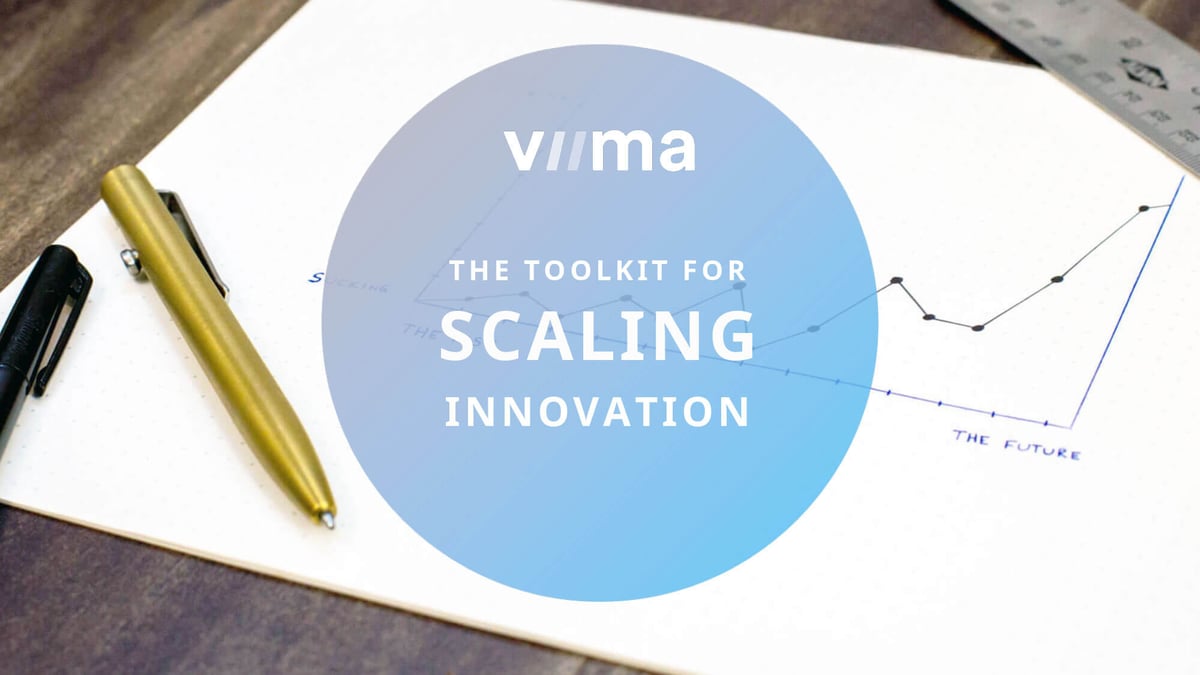
Interested in Innovation and Leadership?
Subscribe to our blog to get the latest stories on innovation, leadership and culture straight to your inbox.






